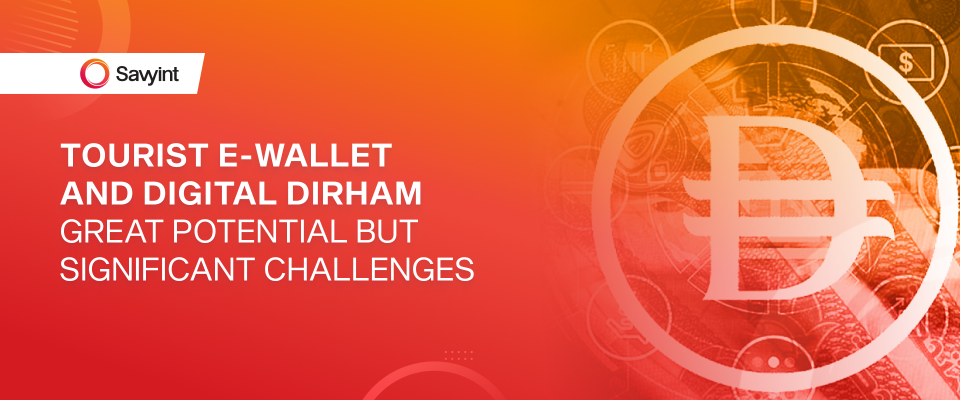To meet the operational demands of the digital economy and enhance the efficiency of payment systems, the Central Bank of the UAE (CBUAE) has introduced the national digital currency, the Digital Dirham. Recently, the CBUAE discussed four potential use cases for the Digital Dirham, with the development of an electronic wallet for tourists being a particularly prominent topic.
The CBUAE recently released the Digital Dirham Primer, a policy report outlining the design principles, policy framework, and initial development steps for the Digital Dirham. In addition to highlighting benefits, challenges, and implementation processes, the report details four use cases for the digital currency, including:
- Tokenizing property ownership, such as real estate, into digital assets.
- A smart travel wallet for international tourists, enabling instant VAT refunds and the use of the digital currency.
- Smart social welfare payments with controlled spending scopes.
- A parent/child wallet for financial education and setting spending limits.
Among these, the concept of an electronic travel wallet for tourists has garnered significant attention, given that the UAE attracts millions of international visitors annually, who collectively spend vast amounts on accommodation, shopping, dining, and entertainment. Theoretically, even if just 10% of tourism spending shifts to the Digital Dirham wallet, it could create a substantial economic impact and promote the adoption of the digital national currency.

However, launching a tourist e-wallet is not as simple as introducing it to the market and expecting adoption. Most tourists in the UAE rely on Apple Pay, Google Pay, international credit/debit cards, or digital wallets from their home countries, such as UPI (India) or Alipay and WeChat Pay (China).
For tourists to adopt a new payment method like the Digital Dirham, it must offer superior value and address inconveniences that existing infrastructure fails to resolve. Key considerations include:
- Streamlined registration process: Ideally, tourists should be able to use the Digital Dirham wallet immediately upon arrival, such as at the point of entry or when purchasing an eSIM. The process should take around 90 seconds, involving passport scanning, wallet activation, and pre-loading a set amount of AED. This would make the e-wallet immediately usable, eliminating the need to search for and download a new app from the App Store or Google Play.
- Timely incentives and discounts: If paying with the Digital Dirham offers no distinct advantage over Visa or Apple Pay, tourists will have little reason to switch. Offering exclusive discounts or promotional codes could incentivize adoption and retention.
- Simplified funding and withdrawal processes: The wallet should integrate with multiple channels, allowing tourists to fund it using international cards or popular payment systems like UPI, Alipay+, or WeChat Pay, while also enabling easy withdrawal of remaining funds at the end of their trip.
- Advanced features: Features such as escrow services and instant payments for hotel bookings or car rentals, widespread acceptance at key tourist touchpoints (accommodation, transport, dining, and entertainment), and offline payment capabilities in areas with limited connectivity (e.g., subways or remote locations) would enhance usability. These features could also reduce the need for prolonged card holds.
- Instant VAT refunds: Allowing VAT refunds to be credited directly to the wallet at the airport upon departure, rather than waiting for card statement processing, would add significant convenience.
The electronic travel wallet scenario is a complex challenge involving multiple factors, including user experience, cost, widespread payment acceptance across various locations, and integration with diverse payment methods. If these elements are effectively addressed, capturing 10% of the tourism spending market share is entirely feasible. Banks and wallet developers must carefully strategize to turn this potential into tangible success.







